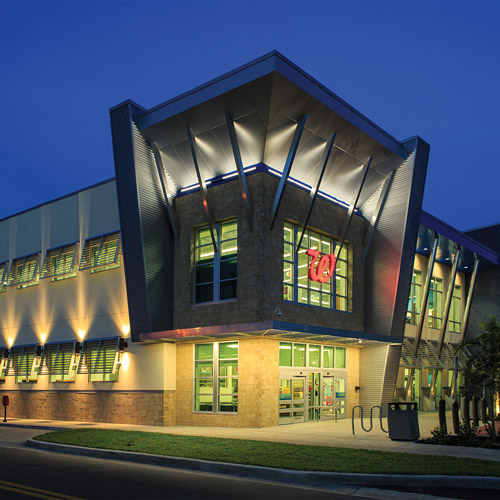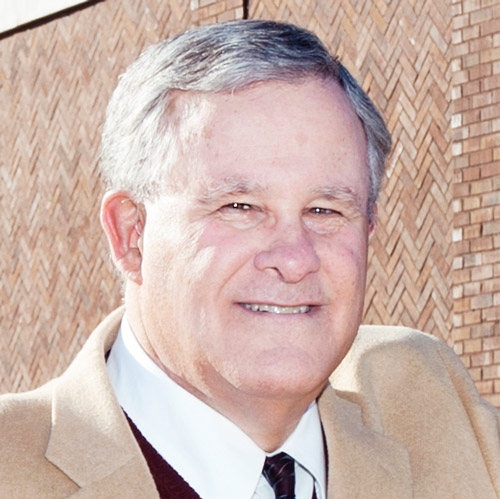
When Banner Health, a Phoenix, Arizona-based nonprofit health care system that is the leading provider of hospital services in the communities they serve, decided to strengthen its affiliation with the University of Arizona medical school, it realized that would require a significant investment in new facilities. At the top of the list were two 700,000-square-foot projects, one in Tucson and the other in Phoenix, to house the newly named Banner University Medical Centers. The development and construction of those projects landed on the already busy desk of Kip Edwards, vice president of facilities services for Banner Health.
“We needed a close working relationship with academic medicine to access the forefront of what is going on in medicine and to influence how new physicians are being trained to help them integrate better into the future of healthcare,” says Edwards, who has been with Banner for 12 years and in the healthcare industry for almost 40. “As part of that, we have committed $1 billion in capital investment in academic medicine.”
In Tucson, the medical center required a new facility. “The patient beds were aged, the operating rooms were undersized. It needed new surgical and imaging suites, cafeteria and support space,” Edwards says. The Phoenix center required an expanded and reconfigured emergency department and trauma center. “Ambulances had to drive up a ramp but couldn’t make the turn. That is a problem,” he says. It also had an old patient towers with many semi-private rooms. “We believe care is best delivered in private rooms, for quality of care, privacy, infection control, and family involvement, so we are building a new tower with all private rooms,” he says. Both facilities will have new main entrances, changing the way patients and families enter the medical centers.

According to Edwards, design is the most important phase of any project now, because he believes in following an integrated project format. “We bring the general contractors, the architects, the engineers, the subcontractors, and even the product suppliers on board during the design, and make integrated teams around what they are working on,” he says. For example, if the project is the exterior envelope of the building, those particular contractors, subcontractors, architects, structural engineers and suppliers all work together through the design phase to come up with the best solutions. “That goes for all parts of the building,” he says.
He has been using this approach for the past half-dozen years or so, and now follows it for all large projects. “The fascinating part for me, after living through the years where every day on site was the Wild West, everything now is all worked out on a computer before you set foot on the site,” he says. “It then becomes more of an assembly process. Construction definitely goes smoother.”
Still, both projects are extremely complex, not least because they are occurring in the middle of a working hospital caring for sick patients. “Everything has to be done right, like reducing dust, noise and vibrations, and especially the utility work, because patients on the other side of the wall are dependent on those services,” he says. “There is no way we can disrupt them.”
That challenge can be fun, Edwards says. The Tucson project abuts the children’s hospital, and pediatric rooms look out onto the site. “Our workers made a bunch of Pokémon characters and would move them around every day so the kids could try to spot them,” he says. “In Phoenix a girl saw all these construction guys and held up a sign saying ‘Sing “YMCA” to me.’ So, four of the guys stood on the edge of an open floor and performed the song for her.” He says the workers have also put up their own signs, telling patients, “We are here to take care of you.” “We all realize we here are to serve our patients,” Edwards says.
Banner Health operates 28 hospitals and several specialized facilities across six states, plus hundreds of clinics, so Edwards and his crew are always busy, typically juggling more than 300 active projects worth upwards of $2 billion at any one time. He credits his team of 45, and his operating structure, with making it all run smoothly. “We have very good people and we have set up the right systems, practices, and training to get teams positioned where the work is,” he says. “The goal is to put the team in place and then let people go and do their jobs.”
Though the bigger projects get the headlines, he says that his team’s “bread and butter” is all the smaller projects they oversee daily. “It is actually harder to handle smaller ones, because they happen quicker,” he says. “They are not remarkable, but there are a lot of them, and they have to go smoothly and be planned carefully to do it as quickly as possible. We have patients going by our projects every day, so we need to not disrupt their safety of care.”
Photo: Daryl Shields HKS, Inc.
Banner Health’s vision to be a National Leader recognized for excellence, innovation, and being distinguished by the quality of its people is embodied in Kip
Edwards and his leadership of Development & Construction within Banner Health. Kip’s unrelenting ambition for excellence, innovation and employing the best individuals is demonstrated on each project he presides over and the team of professionals he leads. Hensel Phelps shares this vision and is known in the industry for providing these same core company values. As such, the projects we partner on with Banner achieve extraordinary results. As one of the nation’s premier, full-service facilities solutions providers in this current, unprecedented market, we are in the fortunate position of being able to choose our clients. Hensel Phelps chooses Banner Health!


